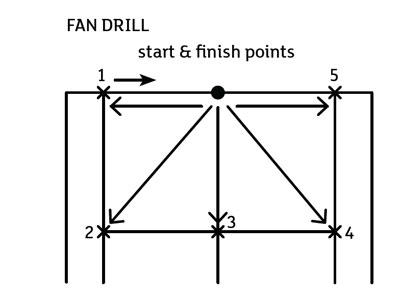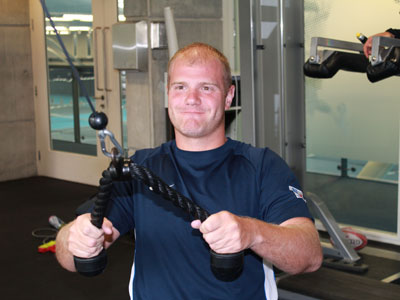A day in the life of Marc McCarroll
Marc McCarroll, aged 27 from Middlesex, is one of the players based at the National Tennis Centre.
He started playing wheelchair tennis in 2005 and has been going from strength to strength ever since. Winning the first ITF 1 Series title of his career in the men’s main draw at the 2012 Airports Company South Africa, South African Open in Johannesburg in April, McCarroll has lots to look forward to as the summer of tennis lays ahead of him.
Along with a number of other top Team GB hopefuls, Marc will be playing in the British Open in Nottingham this July.
Marc has his own personalised schedule with his trainers and coaches and an average day for him looks something like this:
9am-9.30am:
On court warm-up, which includes injury risk management by activating trunk and shoulder muscles and some rotator cuff work.
9.30am-11am:
Hitting with coach on court.
11am-11.30am:
On-court conditioning with drills to improve chair movement (e.g. the fan drill – see diagram below). The fan drill is usually completed three times in a row. It takes, on average, the following amount of time for the player to complete one full repetition:
- Men: 21 seconds
- Women: 23 seconds
- Quads: 24 seconds

11.30am:
Sport psychology or performance lifestyle session.
12noon-1pm:
Lunch.
1pm-2pm:
Workout in the weight room.

Marc training in the weight room
Nick Cooper, Marc’s strength and conditioning coach, puts Marc through his paces to ensure he is developing specific muscles in the areas he needs them:
“I’ve been working with Marc, building up his upper back, shoulder and trunk strength. As people who use wheelchairs do so much pushing, we need to balance this out in the gym with pulling to work different muscles.
“Marc is performing a cable row exercise to work the muscles of his upper back trapezius, rhomboid and posterior deltoid.
“The cable is positioned slightly above head height and the start position is with arms extended in front of the body. Movement is initiated by pulling the shoulder blades back and down before bending the arms and pulling the elbows back. Full range of motion is encouraged so the cable attachment should touch the chest around mid-sternum at the end of each repetition.
“Typically this exercise would be performed for 3-5 sets of 10-15 reps.”
2pm-3pm:
On-court matchplay to work out tactics and contingency plans.
3pm-3.30pm:
Serving practice.
3.30pm-4pm:
Soft tissue massage, physio or a session in the hydrotherapy pool.
Share